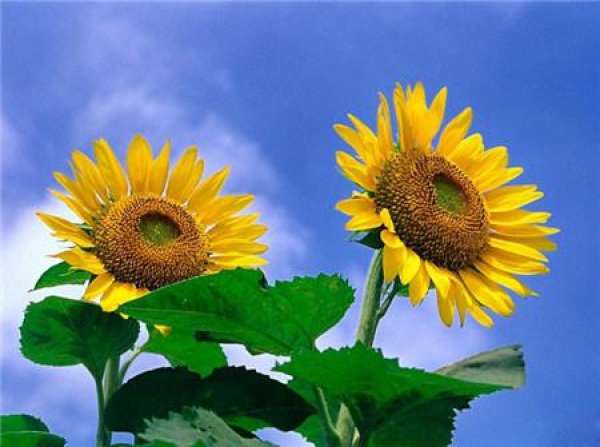Sunflower is named because the top of its young plant at the early stage of growth and the young flower plate at the middle stage will rotate with the sun. Sunflower movement is a typical phototropism. When the sun rises in the East, the east side of the green and dripping sunflower is exposed to sunlight, resulting in the distribution of auxin in the west side of the backlight. The cells on this side elongate longitudinally and grow fast, resulting in the young stem bending towards the east side of the slow growth, i.e. the top of the sunflower (disk) bends eastward in the morning. With the sun moving in the air, changing the direction of the light, the top of the sunflower (flower plate) is also constantly changing direction, standing at noon, bending in the afternoon, sunflower is also following the sun's rise in the East and set in the West.

Different from animals, plants have no nervous system and muscles, so they don't feel the stimulation of the outside world. But Mimosa is different from other plants. When it is touched by the outside world, the leaves will droop and the leaflets will close. This action is understood as "shy", so it is called Mimosa. This special ability of Mimosa has its historical roots. Its hometown is Brazil in tropical South America, where there are often strong winds and heavy rain. Whenever the first drop of rain hit the leaf, it immediately closed the leaf and drooped the petiole to avoid the damage from the storm. This is a kind of adaptation that it adapts to the changes of external environmental conditions. In addition, the movement of Mimosa can also be seen as a way of self-defense. When an animal touches it, it closes its leaves, and the animal dare not eat it any more

Water lily, also known as meridian lotus and water celery flower, is a perennial aquatic plant belonging to the water lily family. Water lily is a precious flower among aquatic flowers. As the sun sets, the flowers of water lilies will gradually close, as if they are going to sleep at night, so the water lilies are named. Because of its relaxing day and relaxing night, water lily is also known as "Sleeping Beauty in flowers". Once a poet described water lilies like this: "don't get me wrong, we don't like sleeping, just don't like twilight. At night, we close the flowers. After midnight, we open very early, and welcome the rising sun in advance, and the vitality comes."

Dancing grass, also known as dancing grass, love grass, windless automatic grass, amorous grass, Fengliu grass, courtship grass, etc., belongs to the legume dancing grass, which is a perennial woody plant. There are three beautiful leaves on each petiole. When the temperature is above 25 ℃ and stimulated by 70 decibels of sound, two small leaves will "dance by themselves" around the middle big leaves, giving people a fresh and mysterious feeling. Dancing grass is produced in some provinces of South China. Nowadays, many botanical gardens are planted with dancing grass. As a pet that can move, it has attracted much attention.
